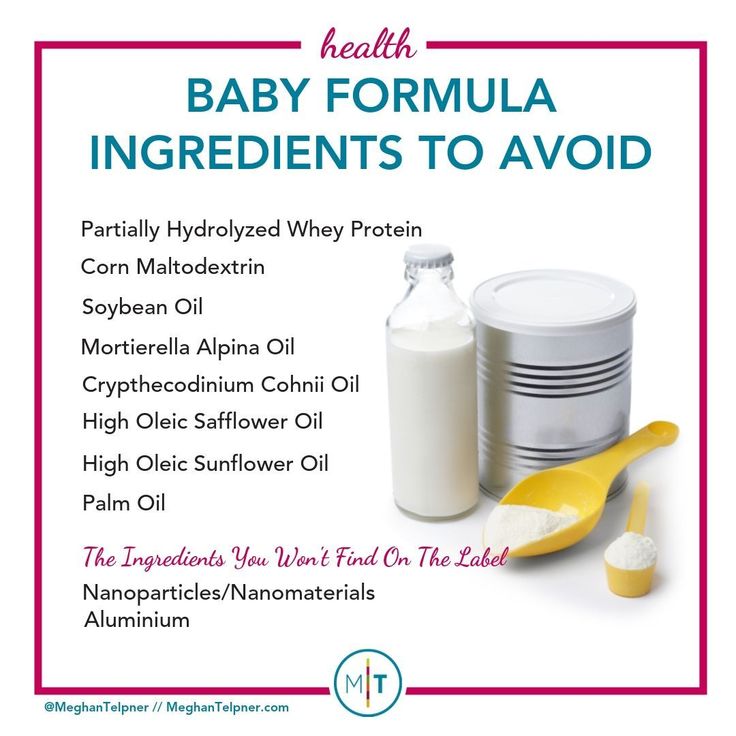Newborn baby feeding schedule formula
Amount and Schedule of Baby Formula Feedings
- In the first week after birth, babies should be eating no more than about 1 to 2 ounces (30 to 60 ml) per feed.
- During the first month, babies gradually eat more until they take 3 to 4 ounces (90 to 120 ml) per feed, amounting to 32 ounces per day. Formula-fed babies typically feed on a more regular schedule, such as every 3 or 4 hours. Breastfed babies usually take smaller, more frequent feedings than formula-fed infants.
If your baby sleeps longer than 4 to 5 hours during the first few weeks after birth and starts missing feedings, wake them up and offer a bottle.
By the end of the first month: Your baby will be up to at least 3 to 4 ounces (120 mL) per feeding, with a fairly predictable schedule of feedings about every 3 to 4 hours.
By 6 months: Your baby will consume 6 to 8 ounces (180–240 mL) at each of 4 or 5 feedings in 24 hours.
Formula feeding based on body weight
On average, your baby should take in about 2½ ounces (75 mL) of infant formula a day for every pound (453 g) of body weight. But they probably will regulate their intake from day to day to meet their own specific needs, so let them tell you when they've had enough. If they become fidgety or easily distracted during a feeding, they're probably finished. If they drain the bottle and continues smacking their lips, they might still be hungry.
There are high and low limits, however. If your baby consistently seems to want more or less than this, discuss it with your pediatrician. Your baby should usually drink no more than an average of about 32 ounces (960 mL) of formula in 24 hours. Some babies have higher needs for sucking and may just want to suck on a pacifier after feeding.
On-demand feeding
Initially it is best to feed your formula-fed newborn a bottle on demand, or whenever they cry with hunger.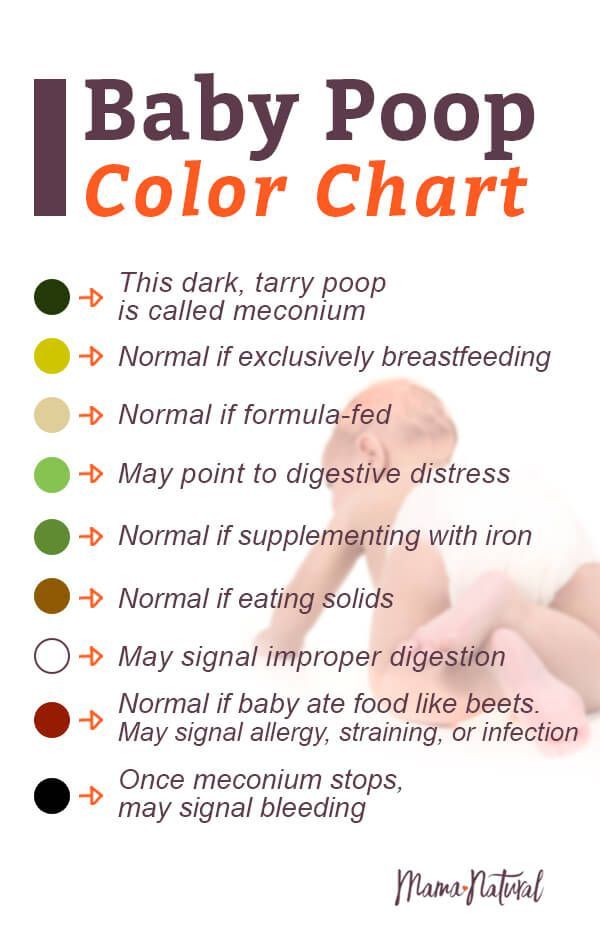 As time passes, your baby will begin to develop a fairly regular timetable of their own. As you become familiar with their signals and needs, you'll be able to schedule their feedings around their routine.
As time passes, your baby will begin to develop a fairly regular timetable of their own. As you become familiar with their signals and needs, you'll be able to schedule their feedings around their routine.
Eating & sleeping patterns
Between 2 and 4 months of age (or when the baby weighs more than 12 lb. [5.4 kg]), most formula-fed babies no longer need a middle-of-the-night feedings. They're consuming more during the day, and their sleeping patterns have become more regular (although this varies considerably from baby to baby). Their stomach capacity has increased, too, which means they may go longer between daytime feedings—occasionally up to 4 or 5 hours at a time.
If your baby still seems to feed very frequently or consume larger amounts, try distracting them with play or with a pacifier. Sometimes patterns of obesity begin during infancy, so it is important not to overfeed your baby.
Getting to know your baby's feeding needs
The most important thing to remember, whether you breastfeed or bottlefeed, is that your baby's feeding needs are unique.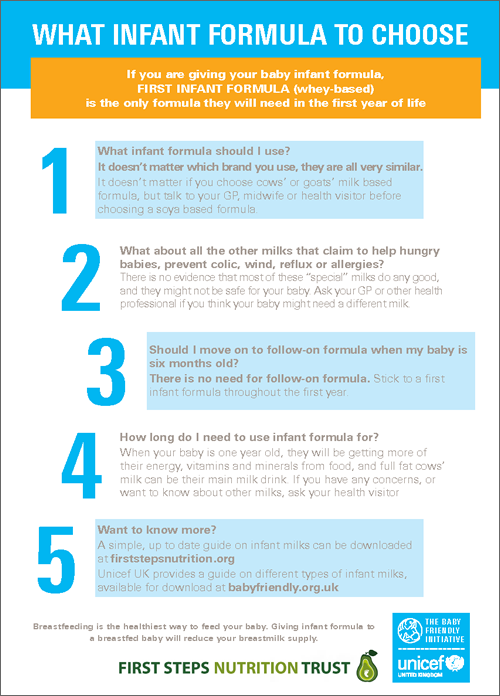 No book―or website―can tell you precisely how much or how often they need to be fed or exactly how you should handle them during feedings. You will discover these things for yourself as you and your baby get to know each other.
No book―or website―can tell you precisely how much or how often they need to be fed or exactly how you should handle them during feedings. You will discover these things for yourself as you and your baby get to know each other.
More information
- How Often and How Much Should Your Baby Eat?
- Making Sure Your Baby is Getting Enough Milk
- Is Your Baby Hungry or Full? Responsive Feeding Explained (Video)
- Remedies for Spitty Babies
The information contained on this Web site should not be used as a substitute for the medical care and advice of your pediatrician. There may be variations in treatment that your pediatrician may recommend based on individual facts and circumstances.
How Often and How Much Should Your Baby Eat?
By: Sanjeev Jain, MD, FAAP
One of the most common questions new parents have is how often their baby should eat. The best answer is surprisingly simple: in general, babies should be fed whenever they seem hungry.
How do I know when my baby is hungry?
For babies born
prematurely or with certain medical conditions, scheduled feedings advised by your pediatrician are best. But for most healthy, full-term infants, parents can look to their baby rather than the clock for hunger cues. This is called feeding on demand, or
responsive feeding.
Hunger cues
A hungry baby often will cry. But it's best to watch for hunger cues before the baby starts crying, which is a late sign of hunger and can make it hard for them to settle down and eat.
Some other typical hunger cues in babies:
Licking lips
Sticking tongue out
Rooting (moving jaw and mouth or head in search of breast)
Putting his/her hand to mouth repeatedly
Opening her mouth
Fussiness
Sucking on everything around
It is important to realize, however, that every time your baby cries or sucks it is not necessarily because he or she is hungry. Babies suck not only for hunger, but also for comfort; it can be hard at first for parents to tell the difference. Sometimes, your baby just needs to be cuddled or changed.
Babies suck not only for hunger, but also for comfort; it can be hard at first for parents to tell the difference. Sometimes, your baby just needs to be cuddled or changed.
General guidelines for baby feeding
It is important to remember all babies are different―some like to snack more often, and others drink more at one time and go longer between feedings. However, most babies will drink more and go longer between feedings as they get bigger and their tummies can hold more milk:
Most newborns eat every 2 to 3 hours, or 8 to 12 times every 24 hours. Babies might only take in half ounce per feeding for the first day or two of life, but after that will usually drink 1 to 2 ounces at each feeding. This amount increases to 2 to 3 ounces by 2 weeks of age.
At about 2 months of age, babies usually take 4 to 5 ounces per feeding every 3 to 4 hours.
At 4 months, babies usually take 4 to 6 ounces per feeding.

At 6 months, babies may be taking up to 8 ounces every 4 to 5 hours.
Most babies will increase the amount of formula they drink by an average of 1 ounce each month before leveling off at about 7 to 8 ounces per feeding. Solid foods should be started at about 6 months old.
Concerns about overfeeding or underfeeding your baby
Too full?
Babies are usually pretty good at eating the right amount, but they can sometimes take in more than they need. Infants who are bottle feeding may be more likely to overfeed, because drinking from a bottle may take less effort than breastfeeding.
Overfed babies can have stomach pains, gas, spit up or vomit and be at higher risk for obesity later in life. It's better to offer less, since you can always give more if your baby wants it. This also gives babies time to realize when they're full.
If you are concerned your baby wants to eat
all the time―even when he or she is full―talk with your pediatrician.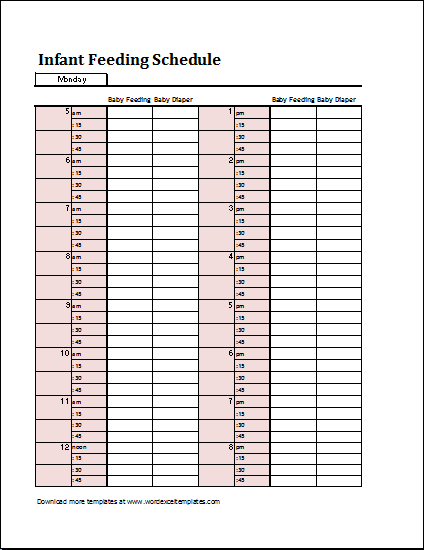 Pacifiers may be used after feeding to help sooth healthy-weight babies who like to suck for comfort, rather than nutrition. For babies who are breastfed, it's best to wait to offer pacifiers until around 3 to 4 weeks of age, when breastfeeding is well-established.
Pacifiers may be used after feeding to help sooth healthy-weight babies who like to suck for comfort, rather than nutrition. For babies who are breastfed, it's best to wait to offer pacifiers until around 3 to 4 weeks of age, when breastfeeding is well-established.
Trouble gaining weight?
Most babies will double their birth weight by 5 months of age and triple their birth weight by their first birthday. If your baby is having trouble gaining weight, don't wait too long between feeding―even if it means waking your baby. Be sure to talk with your pediatrician about how often and how much to feed your baby.
How do I know if my baby is getting enough to eat?
Daily diapers
A newborn's
diaper is a good indicator of whether he or she is getting enough to eat. In the first few days after birth, a baby should have 2 to 3 wet diapers each day. After the first 4 to 5 days, a baby should have at least 5 to 6 wet diapers a day. Stool frequency is more variable and depends whether your baby is
breastfed or formula fed.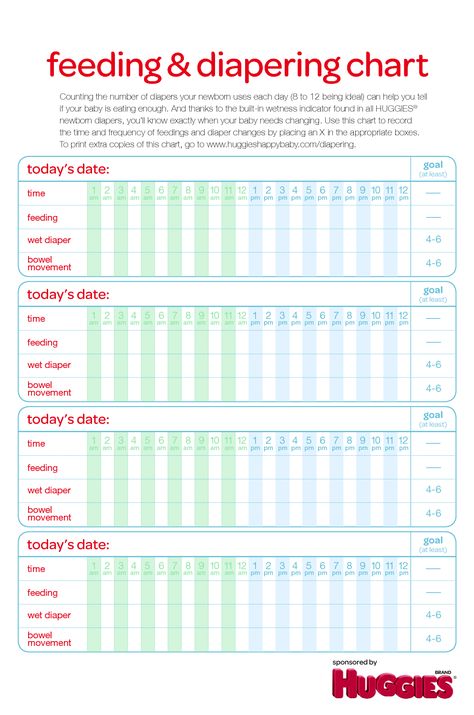
Growth charts
During regular health check-ups, your pediatrician will check your baby's weight and plot it on a growth chart. Your baby's progress on the growth chart is one way to tell whether or not they are getting enough food. Babies who stay in healthy growth percentile ranges are probably getting a healthy amount of food during feedings.
Remember
Talk with your pediatrician if you have any questions or concerns about your baby getting the right amount to eat.
More information:
- Making Sure Your Baby is Getting Enough Milk
- Amount and Schedule of Formula Feedings
- Is Your Baby Hungry or Full? Responsive Feeding Explained (Video)
- Remedies for Spitty Babies
- Ask the Pediatrician: With the baby formula shortage, what should I do if I can't find any?
- Ask the Pediatrician: How should we feed our baby if we're running low on money?
-
Airplane Choo Choo: A Feeding Guide for Children (National Dairy Council)
About Dr.
 Jain:
Jain:
Sanjeev Jain, MD, FAAP, is a Clinical Associate Professor of General Pediatrics and Adolescent Medicine at the University of Wisconsin School of Medicine and Public Health. Within the American Academy of Pediatrics, he is a member of the Section on International Child Health and the Wisconsin State Chapter.
The information contained on this Web site should not be used as a substitute for the medical care and advice of your pediatrician. There may be variations in treatment that your pediatrician may recommend based on individual facts and circumstances.
WHO Complementary Feeding Tables and Charts
This article is a generalized analysis of two approaches to the introduction of complementary foods and feeding of infants up to a year: the Russian Research Institute of Nutrition of the Russian Academy of Medical Sciences and the World Health Organization (WHO). Also, the analysis took into account the opinions of some respected pediatricians of our country (Y. Yakovlev and others).
Yakovlev and others).
This page has a link to a PDF file with a table (calendar) for introducing complementary foods for the first 6 weeks
Two main principles for introducing complementary foods
The main thing to keep in mind before rolling up your sleeves
- to prepare for the common table (that is, the baby must learn to eat on his own)
- Complementary foods are necessary for the formation of proper eating behavior
This is the most important of all the variety of reasons to start introducing complementary foods. Of course, there are exceptions in terms of health, but we are talking about a standard situation. nine0005
Since the first stage of introducing complementary foods is precisely preparation, no breastfeeding during this period (up to 1 year according to WHO) should be removed or replaced with complementary foods.
And the second conclusion must always be put at the forefront of eating behavior. No cartoons, running after a child with a spoon, and even more so violence and blackmail.
No cartoons, running after a child with a spoon, and even more so violence and blackmail.
Yes, at the first stage you will stuff the spoon, it's not difficult. It will be much more difficult to retrain a 1.5-year-old child to eat on his own or, even worse, form a food interest from scratch if the child does not start eating properly or refuses to eat (this is an extreme case). nine0005
I will say with the doctor's words "A hungry child eats, but a tired child sleeps." This reflects the essence of a well-formed eating behavior: I want to eat - I eat. Of course, this is more typical for an older child, when all stages of complementary feeding have been completed. And the right tactics at the very beginning is the key to the successful implementation of this rule in the future.
So, we remove all the garbage from the head (including those imposed by pediatricians working according to Soviet manuals) and move on to the tactics of the first complementary foods. nine0005
When to start introducing complementary foods
When to introduce complementary foods? I have already written about this in part in a general article.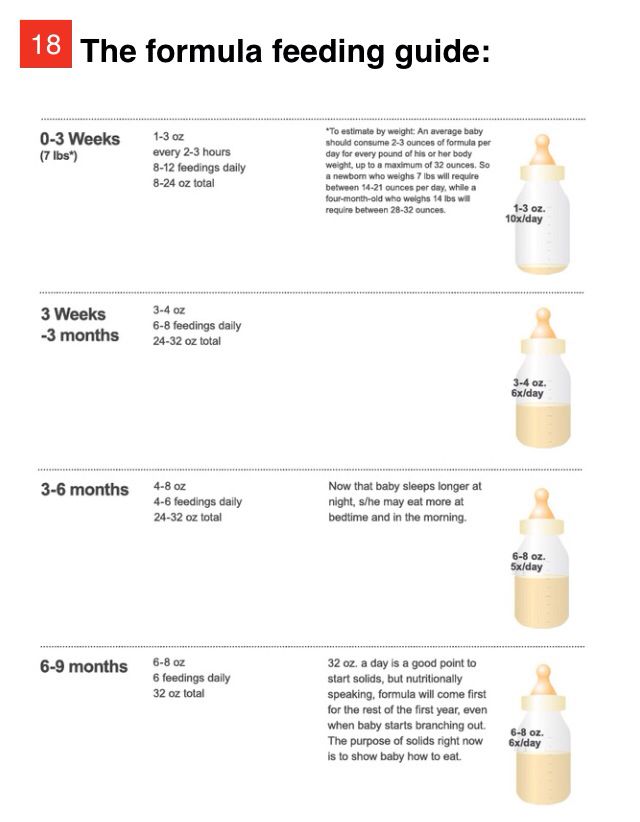 Here I will be guided by the WHO methodology stated above. It's written in black and white.
Here I will be guided by the WHO methodology stated above. It's written in black and white.
“The start of introducing complementary foods should be considered the age of 6 months, and not the beginning, but the end of 6 months or 26 weeks
It is important to know the main indicators of readiness for complementary foods other than age.
Not the beginning of 6 months, but the child reaching the age of 6 completed months. Therefore, if your pediatrician once again prescribes complementary foods for you from 4 months without serious medical reasons, you can smile and keep a printout from this manual in your pocket. Non-critical weight loss does not apply here. This is a very complex topic, it should be discussed separately. At least 125 grams per week, babies should gain on GW, and not 700-800-800 ... per month as in their Soviet-era tables. nine0005
Dear mothers, breathe out. You have a whole month from 6 to 7 to start introducing complementary foods. It is absolutely not necessary to do this at the 21-22nd week (page 220 of the WHO recommendations, chapter 8).
It is absolutely not necessary to do this at the 21-22nd week (page 220 of the WHO recommendations, chapter 8).
It is better not to delay 8 months later, as this will already concern the development of certain chewing skills, the development of taste perception, and not just the inability of milk to provide all the needs of a rapidly growing organism in micro and macro elements.
In addition to 7 months, in general, the development of the nervous system allows the child to master the following skills:
- biting and chewing
- cleaning the spoon with the lips
- lateral movements of the tongue
- moving food to the teeth
All this indicates the ability of a child by the age of 7 months to taste food only in pieces, and not in pure form. You need to start with microdoses.
For some reason, nutritional consultants, at least those who met me, do not focus on this for a period of weeks. It seems to me that this is very in vain, since such a backlash will allow mom to calmly determine the degree of readiness of the baby to introduce complementary foods.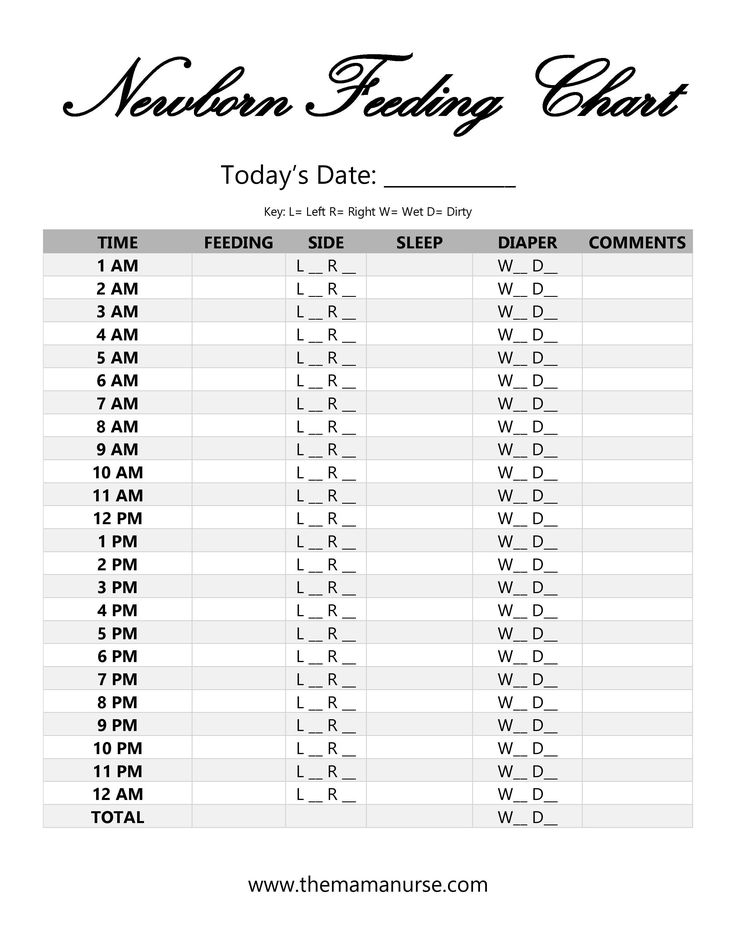 And this is also very important for the formation of proper eating behavior. nine0005
And this is also very important for the formation of proper eating behavior. nine0005
Feeding food too early can have a negative effect on the formation of the correct nutritional interest . The unpreparedness of the child, in turn, can lead to nervousness of the mother, as the child will refuse complementary foods, or the gastrointestinal tract will fail, then persuasion, dancing with tambourines, and so on. All this alone will not solve the problem. This is already a consequence.
It is important to determine how ready your child is for complementary foods . Not ready - move the start to 6.5 - 6.7 months. It's not critical. nine0005
2 clear signs of readiness for the introduction of complementary foods
- Readiness of the gastrointestinal tract
- Readiness of the nervous system (food interest)

Serving size of the first solid food
Your pediatrician will very likely tell you to increase the serving size to 200 grams. At the preparatory stage, this is completely optional! You remember, not a single breastfeeding (mixture) is replaced. This statement also takes its roots from pediatric tables, where a child at 6 months should consume 1 liter of food per day. We divide this into 5 doses - we get 200 milliliters
But we are talking about breast milk (formula). You breastfeed your baby on demand (if formula, then by grams, but also without changing the schedule before complementary foods). Accordingly, this recommendation has no weight until you start replacing one feeding with complementary foods, and this is definitely not the first stage. Unless, of course, you decide to quit breastfeeding early. I am talking about those mothers who plan to breastfeed for at least a year (not even up to 2, as WHO consultants now recommend, although the manual is not so strict and according to the mutual desire of mother and baby). nine0005
nine0005
Myth - Start with canned puree
This myth is actively inculcated by the same pediatricians (not all, we have met), scaring mothers with pesticides in purchased zucchini.
WHO guidelines clearly state :
“Ideally, infants should eat the same diet as the whole family” not french fries and burgers. Therefore, if the mother prepares a common table, all seasonings are introduced after the portion of the baby is postponed. Next, a portion of the baby is brought to the desired consistency. nine0005From WHO recommendations:
“Carers should select appropriate foods and prepare them in such a way as to maximize their nutritional value”steam" is preferable to boiling. Therefore, if you have the time and desire, and even more so if you have access to subsistence farming, a blender and a double boiler are in your hands.
Most importantly, read the basic cooking tips if you cook yourself.
And if you decide to stop at canned food, analyze the product lines in your stores, choose the best quality without starch, flour and other surprisingly unnecessary components, and buy according to the complementary food scheme. nine0005
However, the same WHO recommendations say that if you choose industrial cans, you still need to give food from the common table, "to accustom the child to a greater variety of taste sensations and textures." Again, food in pieces should be introduced from 7 months, and in one-component vegetable puree, food will be in the form of puree without pieces. Therefore, you still have to cook at least vegetables for microdoses.
Basic rules for the first phase of introducing complementary foods for the first six weeks
Complementary foods of a new product are introduced in the morning , usually for breakfast
Gradually! Serving size increases from 1/2 tsp.
up to 150 - 200 gr. maximum within 7 days. Some modern pediatricians recommend extending this period at the first stage to 10-14 days. There are no strict requirements, so watch the child's well-being after introducing new food, his mood and appetite in general.
If you need more than 7 days to adapt to a new food, simply extend the proposed complementary feeding schedule over a longer period, adjusting the amount of food introduced. nine0005
At the stage of introduction of complementary foods, the maximum is how much the child wants to eat (even 2-3 tablespoons), but not more than 150 - 200 grams
Remember! At the input stage, the maximum is how much the child wants to eat (even 2-3 tablespoons), but not more than 150 - 200 gr.
And here it should be noted that a child should consume 200 grams of porridge or vegetables at 9-12 months. according to the methodological recommendations of the Russian Academy of Medical Sciences (namely, the "Scientific Center for Children's Health of the Russian Academy of Medical Sciences" of the State Institution "Research Institute of Nutrition of the Russian Academy of Medical Sciences, 2010)
At 6 months.
Serving size - 150 gr. nine0005
At 7 months — 170 gr.
Therefore, your maximum is the one from which month you introduce complementary foods, and not 200 grams
New food is introduced only after complete assimilation of the old
In case some product was rejected, we remove it completely and introduce a new also according to the scheme. We return to the rejected product no earlier than 14 days. It may take several approaches to try. This is absolutely normal. The child grows, there are more enzymes, tastes change. It is also possible to completely refuse to eat, for example, broccoli. Don't worry, there are many more flavors. Remove the broccoli completely before moving to the common table. Then you will use the method of interest and curiosity to attract the attention of an already grown up baby, with rapture eating the same broccoli from your plate and smacking your lips. It will be much later. And now it doesn't matter. nine0005
Assimilated products are gradually shifted to lunch, then to dinner.

The time of meals in the scheme is taken conditionally ! You can shift the total time by 1-2 hours to fit your sleep and wake schedule. It is desirable that the meal regimen be maintained at the time you have chosen. If breakfast is at 10:00, then it is always at 10:00 +/-10 min. From the very beginning, the regimen will help you form an understanding of the time of meals. And in the future, it will be easier for the child to control his appetite. That is, the appetite will come around for lunch, dinner, and not "when I want." nine0005
Remember! Biting during the day is a bad habit and your path to the term "little one".
Do not chase volumes at the first stage of introducing complementary foods! Literally from the WHO manual:
“The goal at the initial stage is to teach the child to eat from a spoon. Learn eating habits and enjoy new tastes”“After a FEW WEEKS, the infant should take a small amount (not 200 grams!) of foods selected from a wide variety of foods, 1-2 times a day”
This means that there is no need to frantically increase the volume of new food to a full serving of 150-200 grams!! Provided that you continue to feed on demand, and breast milk remains a priority for up to a year (that is, the completion of all stages of the introduction of complementary foods and the transition to a regular common table).
If you are formula feeding, you are also feeding normally at this stage. Not replacing any feeding with complementary food.
Traditionally complementary feeding starts with cereals or vegetables
Verbatim from WHO recommendations:
“Positive examples include cereals other than wheat, such as home-cooked and mashed rice, soft, thick porridge made from traditional cereal products, and mashed vegetables and fruits”Please note that the WHO does not ban the introduction of fruits immediately, as recommended by today's complementary food consultants. It is enough to open any chat, where “fruit after meat” will flash here and there. This opinion exists in view of the fact that a child can get used to sweet apples and refuse to eat broccoli.
It is not devoid of common sense. nine0005
Therefore, in order to minimize the possible risk of refusing vegetables, I will be guided by their recommendation in the scheme. Moreover, fruits are not the main meal, but serve for a variety of tastes and as a treat.
If you want to introduce fruits earlier, such as moderately sweet seasonal apples. Below is the serving size in grams also by month from RAMS. However, remember that apples and pears also need to be baked the first time, because. in their raw form, they carry a fairly large load on the digestive tract. Also, we introduce seasonal fruits, no mangoes, bananas or passion fruit, etc., and cooked correctly. nine0005
6 months — 60 g / 7 months — 70 gr.
All products are introduced without the addition of salt, sugar and spices. Note that in the WHO recommendations for the first complementary foods, both cereals and vegetables are good.
In Russian pediatric practice, there is such an experience: The child is “low weight” - start with cereals; problems with stool - with vegetables.

On the one hand, this statement is not without meaning, since the calorie content of cereals is indeed higher than breast milk and vegetables. However, we have already found out that there is no approved serving size at the first stage of the introduction of complementary foods
If the child eats his 150 grams of porridge, then yes. And if he eats 30-50 grams for 3-5 weeks and no more, these recommendations make no logical sense.
However, as well as the concept of "lightweight" is now so vague. A perfectly normal developing child of small-sized mothers and fathers will never enter the norms of pediatrician tables, which were written back in Soviet times for children on mixtures, and are completely outdated. But even there, and what can we say about the outback, these terrible 600-800-800 grams of the set are in front of mothers' eyes. nine0005
By the way, our child is also the first 4 months. I was gaining about 550-600 grams per month along the lower border, and at 4 and 5 I fulfilled the double norm and only on breast milk.
Our pediatrician, although she works in a private clinic and is in good standing in the reviews, also insisted on complementary foods from 4 months. I refused. And, on the contrary, she moved complementary foods by 6.5 months, when the baby began to actively show food interest.
Why it is recommended to introduce complementary foods with cereals or vegetables
The recommendation to start introducing complementary foods with cereals or vegetables, although it refers to the principles of pediatric complementary foods, has a whole and very strong justification. On the course "Complementary foods with a mustache" a whole block is devoted to this. Namely, the physiological readiness of the gastrointestinal tract to assimilate certain macronutrients. These include proteins, fats and carbohydrates. It may seem that since the maturation of enzymes for proteins occurs earlier, then complementary foods could be introduced, for example, from meat, as it was around the beginning 90's, when meat was recommended as a prevention of iron deficiency.
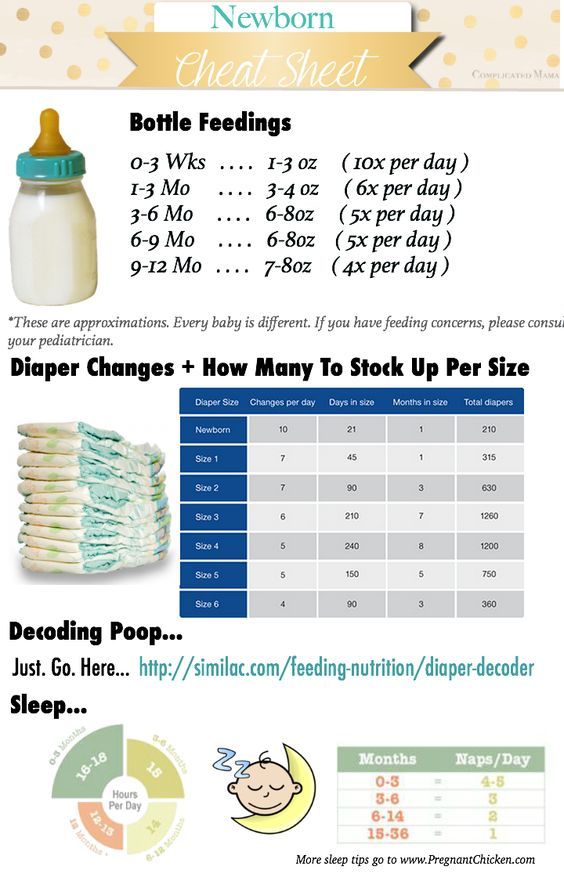
However, later it became clear that the ability of such babies to DIGEST complex meat protein is so small that it can hardly cover the daily requirement. Then it was due to the mother’s need to go to work from 4-6 months, maternity leave was so small, and, accordingly, the preservation of breastfeeding was called into question. And the child needed to be fed. So, back to protein, hydrochloric acid in young children is still produced in negligible amounts, bile to break down complex meat fat (and there are also fats in meat) is also produced negligible, but there is lactic acid. It is she who is needed to curdle milk protein, or mother's milk. nine0005
What else do we cover in the course "Complementary foods wisely"
In the course, of course, we consider this topic in more detail, but in general, I hope you understand why we start introducing complementary foods with lighter foods. The main sign that meat food at this stage is not suitable for the baby is a change in the nature of the stool, it does not just thicken, but becomes fetid.
Communicating with mothers for more than 5 years, I often hear: "And they told me that this is the norm." No, the stench, as you understand, cannot be attributed to the norm even in an adult. It tells us that the environment in the intestine is shifting to the alkaline side, this is the result of putrefactive dyspepsia (when undigested protein particles remain in the intestine for a long time, which feeds pathogenic bacteria). And the next step in this process is constipation. nine0005
We analyze in detail the dangers of constipation in early childhood in the 3rd module of the GIT Health school.
The main stages of introducing products, taking into account the physiology of the gastrointestinal tract, are shown in the table. After the first stage of introducing products, when the “Diet Expansion” stage comes, there will no longer be a need to comply with this rule. As foods other than breast milk or BMS are introduced, both stomach and pancreas enzymatic activity will begin to increase, but this takes time.
Even an adult vegetarian, to start eating meat, needs about a month under the "cover" of enzymes, and here is a baby who did not give out this very meat. This is the basis of the main principle of complementary foods: GRADUAL. Now, while in the baby’s body everything is set up for digesting breast milk, even the activity of gastric lipase now matters, while in adults it does not play any role in the process of digesting fats. nine0005
When should an infant not be introduced to complementary foods?
- The child is unwell, teething
- Vaccination is due
- The child is in a stressful situation that you know about (a trip, a large number of people at home or going to visit, going to a clinic, etc.)
Better in these cases maintain the most familiar conditions for the child and minimize stress. Since we remember that the main food at the stage of introducing complementary foods is breast milk, it is more important to maintain interest in it. nine0005
Scheme and table of the first stage of introducing complementary foods to a child for 6 weeks - based on the recommendations of WHO and RAMS
- First, the most hypoallergenic vegetables are introduced: zucchini - cauliflower - broccoli
- Gluten-free cereals: buckwheat, rice, corn
- Grams cost conditionally, in proportion to the days of introduction and the maximum serving size (the first day is always 0.
5 teaspoon)0005
Second week
Since porridge is traditionally served for breakfast, vegetables are gradually transferred to lunch. At the first stage of entering vegetables, see how it is more convenient for you. Or give two kinds of vegetables for breakfast. Or immediately share for breakfast - lunch. I would divide it up to better control the gastrointestinal reaction and allergies
Third week
Similar to the second week, for breakfast instead of cauliflower - broccoli, for lunch zucchini or cauliflower (alternate if both were digested, if not, the product that mastered)
Fourth week
We introduce cereals in the sequence buckwheat - rice - corn grits for breakfast. For lunch, we eat any vegetables already entered in the amount of your maximum (zucchini, cabbage or their mixes). After assimilation of cereals, we add vegetable oil to them. By the end of this period, the child is offered complementary foods 2 times a day in its maximum volume (150 grams per 1 serving)
Fifth week
Taking into account the fact that in the recommendations of the Russian Academy of Medical Sciences, cereals are always offered in the morning we cook 2 types of cereals in the morning.
Vegetables are left for lunch in the amount of your "full portion" (150 - 170 grams)
Sixth week
Further, by analogy, corn porridge is introduced for breakfast. And for breakfast, rice and buckwheat are left in turn. Also decreasing in volume as the corn porridge increases. Lunch no change - vegetables in the amount of your "full serving" (150 - 170 grams per serving)
Not sure? I also decided that everything is somehow complicated, and therefore I brought everything into one table. Below is a link to download it.
Complementary feeding table for the first 6 weeks
Here is an image with a table below, if you click on it, you can download a PDF file with a complementary feeding table for the first 6 weeks. It also contains grammar and more and more clearly Ska download PDF file - Scheme and table for introducing complementary foods to a child for the first 6 weeks - based on WHO recommendations.
This table can be your sample plan for introducing complementary foods .It also has free cells in which you can put dates and get complementary feeding calendar .
After you have completed these 6 weeks, the first stage of complementary feeding can be considered complete. You can either replace the remaining vegetables at the first stage, for example, if something from the first three does not work, or introduce gradually at the second stage already with meat and fruits. This will be even better since they are more allergenic. nine0005
A little breast milk (or formula) can be added to ready-made porridge and puree for taste, as I wrote earlier. ☝️ Do not cook! Don't forget to add vegetable oil. By the end of the first stage, the volume of vegetable oil will be about 3 grams. More detailed information on the steps for entering products and quantities in the table below. It will also come in handy for 2-4 stages.
Next comes the second stage of the introduction of complementary foods. I will talk about its features in a separate article, also based on the recommendations of WHO and RAMS.
nine0005
Complementary feeding scheme with cereals
Gluten-free and milk-free cereals are introduced first. This is important in order to minimize the risk of developing an allergy to gluten and cow's milk protein. There is a detailed article about gluten and “what it is eaten with” on the website. Gluten-free is buckwheat, rice, corn (like cereals). At the first stage, these tastes are enough for the child.
To get a scheme for introducing complementary foods from cereals, you just need to swap all cereals with vegetables in the “scheme for introducing complementary foods from vegetables” (above in this material). That is, first we put buckwheat instead of zucchini, then rice instead of cauliflower - corn porridge instead of broccoli. Then come vegetables zucchini - cauliflower - broccoli. Grams remain unchanged. nine0005
Important points during the introduction of complementary foods
- Be sure to monitor the child's condition and his reactions to the introduction of new foods.
A food diary can help you with this. So you can understand what and when you gave, if you see an allergy or problems with the stool, or a change in the general condition. When most of the products have already been introduced, you can refuse it.
- When weaning begins, start offering water if the baby is breastfed without supplementation. At this stage, there is no mandatory rule. How much he drinks, how much he drinks. Water is better to offer raw purified or baby water, not boiled. As Dr. Komarovsky says: "boiled water does not exist in nature." nine0014
What to breastfeed or complementary foods first?
On page 229 of chapter 8 of the WHO recommendations, it is clearly stated:
“Food should be offered after breastfeeding to avoid replacing breast milk with complementary foods.” Again a mismatch.
It is logical that it would be more convenient for the baby to drink complementary foods that are not very tasty. Pediatrician Yakov Yakovlev writes about the same thing and believes that not everyone wants some kind of complementary foods after milk, and this issue needs to be approached individually.
After 6 months the risk of reduced lactation is not great. nine0005
Breastfeeding remains the main source of nutrition for a baby up to a year. Unless, of course, you decide for some reason to complete it earlier. Then you switch not to complementary foods, but to a mixture and give it according to the schedule and in volumes already according to age.
It will be possible to replace feeding after all stages of introduction of products are completed, namely after a year. The child goes to the common table, and breast milk remains a pleasant bonus as long as it brings mutual pleasure to mother and child. In general, the WHO recommends that breastfeeding be stopped until 2 years of age. Russian science is not so categorical. nine0005
The main and most important rule for introducing complementary foods!
- Complementary foods are not forced! If you see, the child categorically does not eat what is offered, spits, hysteria (not just pushes out with his tongue, but does not even try to taste), no matter how the grandmothers, the pediatrician, the husband and even the neighbor who has a child at 6 months insist.
already ate a baked apple, ☝️ leave this venture for at least a week - or even two. No violence, no shoving, worse than being held at the table. This is an indicator that the time has not yet come for your baby. nine0289
- Create your first food interest! Sit on your knees when you eat, show food, spoons, plates. Let everything touch. Just remove anything dangerous, sharp, hot or valuable and expensive from the access area. Babies learn so quickly that you won't even notice how the baby himself or herself takes a spoon. Even if you do not remember anything written above, this point is the most important. Understanding that everything has its time will save your nerves. And for a baby, a calm and affectionate mother is more important than a belly stuffed according to outdated rules. nine0014
Conclusion
If your child eats with appetite, learns new tastes well, is ready to eat more, you will pass the first stage in 6 to 8 weeks. Or it may happen that the child does not want to eat first one, then the other.
Then the preparatory stage of the introduction of complementary foods may be delayed and this is not critical.
The main thing is to keep calm and composure, to look with the child for tastes that he will like in order to form the basis of dishes for the second stage, with which you will experiment further. The second stage begins with the introduction of meat and fruits (I indicated why above). And by the end of it, you will already get mixes: meat - vegetables, porridge - fruits. We will look at this in another article. nine0005
Love children! Feed confidently!
This material was created based on the recommendations of the WHO "Feeding and nutrition of infants and young children"
If you have read the article in full and watched all the videos on this page - this is a real reason to be proud of yourself! Below is my set of tutorials!
My name is Alena Ponedelko. I am a pediatric nutritionist with a preventive approach, a consultant on complementary foods, nutrition for babies and mothers.
COMPLETE FEEDING INTRODUCTION TABLES AND MANUALS FOR A CONFIDENT STARTMember of the Association of Nutritionists and Health Coaches. nine0289 Supervisor of the NSA Academy of Nutrition, 2K+ students in 2022
Complementary feeding tables for entering the main categories of products: cereals, vegetables, meat, fruits, dairy products
All drinks in complementary foods , including water, teas, juices, milk and similar
Manual: How to choose vegetables, cook and serve safely. Learn how to use seasoning!
Guide to Cans - A Guide to the Sea of Canned and Boxed Industrial Food
MEDERATION “MEASE MELY”
Access to the closed group Telegram: “Natural complementary foods”
Record of the webinar “What you need to know for healthy complementary foods”
90,000 tables with the baby's diet on the baby and artificial feedingComplete balanced nutrition is a prerequisite for the normal development of all organs and systems of the baby.
It is important that children receive a certain amount of macronutrients (proteins, fats, carbohydrates), minerals and vitamins every day. Thanks to this, they will grow up healthy, cheerful and quick-witted. How to properly organize the feeding of children up to a year? Let's look into this issue, which interests all conscious parents. nine0391
Types of nutrition for children under one year old
There are three types of feeding for children under one year old: natural, artificial and mixed. Each of them has its own diet. Consider the features of different types of menus for newborns. General schemes are given for healthy babies. In case of violations of the norm of food consumption, the doctor determines.
Breastfeeding
A breastfed baby from 0 to 6 months receives only mother's milk. According to WHO recommendations, solid food (complementary foods) is gradually introduced into his diet after this age. The proportion of breast milk in the daily amount of food is decreasing, but remains high.
The famous children's doctor E.O. Komarovsky insists that the introduction of complementary foods at an earlier period is not advisable. nine0005
When breastfeeding, most experts recommend that the baby be fed freely, that is, on demand. This approach allows you to maintain lactation at the required level. After 2-3 months, even in the case of free feeding, a flexible feeding schedule for the newborn is established: meals occur at intervals of 2-2.5 hours.
Formula-feeding
When formula-fed, the baby receives an adapted milk formula. Breast milk may be present in its menu, but in a small amount - up to 20% of the total food volume. nine0005Artificial feeding requires adherence to a strict feeding schedule with certain intervals between meals. E.O. Komarovsky reminds that they must be kept, as the mixture is digested more slowly than mother's milk.
Mixed feeding
Mixed feeding occurs when the mother is producing breast milk but not enough for the baby.
The shortage is compensated with the help of artificial mixtures.
The proportion of mother's milk with mixed feeding is more than 20% of the daily diet. The feeding regimen with this type of diet depends on the level of lactation in the mother. If breast milk is the basis of the diet, then the schedule approaches free. In the case of the predominance of the mixture, feeding occurs by the hour.
How to calculate the required amount of food?
This article talks about typical solutions to your questions, but each case is unique! If you want to know from me how to solve your particular problem - ask your question. It's fast and free nine0422!
Your question:
Your question has been sent to an expert. Remember this page in social networks to follow the answers of the expert in the comments:
First 7-10 days
Calculation of the daily amount of formula or breast milk for children in the first 7-10 days of life is carried out in one of two ways:
- Zaitseva's formula.
It is necessary to multiply the body weight of the child at birth by the number of days of his life and find 2% of this number. The result is the required amount of food per day. nine0014
- Finkelstein formula. To determine the daily amount of milk or formula for a child weighing less than 3.2 kg, multiply his age in days by 70. If the weight of the crumbs is less than 3.2 kg, you need to find the product of the number of his days of life and 80.
Regardless of the formula used, the resulting daily volume must be divided by the number of feedings. So you can find out the amount of milk or mixture sufficient for one meal.
Older than 7-10 days
To calculate the amount of nutrition for a newborn older than 7-10 days up to 12 months, the Heibener and Czerny method or volumetric method is used.
The method of Geibener and Czerny allows you to find the required total amount of liquid per day, including formula, milk, water, juice, tea, and so on. This takes into account the weight of the child and his age. The main recommendations are presented in the table. nine0005
For example, a 3 month old baby weighs 5.2 kg. He needs 5200÷6=867 ml of milk or mixture per day. This figure should be divided by the number of meals. The total volume of liquid should not exceed 1 liter in 24 hours.
In modern conditions, the method according to Geibener and Czerny is rarely used, since it is not designed for children with increased body weight, of which more and more are being born recently. The volumetric method is considered more rational.
Food consumption rates depending on the age of the child are shown in the table. nine0005
Introducing complementary foods
There are special guidelines from WHO that provide information on the sequence of introduction of solid foods into the diet of children in the first year of life.
Recommendations are broken down by month below.
Porridge should be boiled in water. Starting from 6 months, vegetable oil should be added to mashed potatoes and porridge. For the first time, it is recommended to limit yourself to 1 drop, gradually bringing the volume to 1 teaspoon. Butter is introduced into the diet at 7 months. The initial dose is 1 g, the average is 10 g. It is advisable to add it to ready-made cereals. nine0005
The above feeding schedule is relevant for breastfed children. If the baby is receiving formula, then solid food can be introduced from 5 months, as his body needs vitamins and minerals for normal development. The same table is used, but all rows are shifted by a month.
Detailed information on how to feed your baby with "adult" products can be found in the table. All recommendations are general in nature. Before introducing complementary foods, you should consult with your pediatrician. nine0005
Product Term Quantity Weaning starters Vegetables With normal or overweight from 6 (sometimes from 5-5. 5) months.
Puree of 1 white or green vegetable. Kashi With normal or overweight from 6-7 months. If the weight is insufficient, then they are introduced from 4-5 months. Starting - ½ teaspoon. Maximum - 100-200 g. nine0471 Gluten-free cereals boiled in water - buckwheat, rice, corn, oatmeal. After entering each porridge separately, you can cook cereal mixes. Vegetable oil 6 months Initial - 3-5 drops. Maximum - 1 teaspoon. Sunflower, corn, olive oils. They should be added to mashed vegetables or meat. Butter 7 Starting - 1/3 teaspoon. Maximum - 10-20 g. nine0471 High-quality vegetable-free butter should be added to vegetable purees and cereals. 
Fruit 8 Starting - ½ teaspoon. Maximum - 100-200 g. Soft fruit mono puree. Gradually, you can make multi-component dishes. Meat 8 Starting - ½ teaspoon. Maximum - 50-100 g. Puree from one component - rabbit, turkey, veal, beef. nine0471 Yolk 8 Starter - 1/4 teaspoon. Maximum - ½ yolk of a chicken egg. It is necessary to boil an egg and add crushed yolk to puree or porridge. Dairy products* 9 Starting - ½ teaspoon. Maximum - 150-200 g. Baby yogurt, kefir or biolact. After 10 months, products with fillers can be introduced (we recommend reading:). Curd* 9 Starting - ½ teaspoon. Maximum - 50 g.
Pure children's cottage cheese. From 10 months it should be supplemented with fruit puree. Baby biscuits 9-10 Starter - 1/3 of a cookie. Maximum - 5 pieces. Fish The average period of administration is 10 months (recommended to read:). If the child has a tendency to allergies - 1 year. Initial - ½ teaspoon. Maximum - 60 g. It is worth feeding the baby with fish 1-2 times a week. Low-fat varieties of fish - perch, hake, cod. It should be boiled or steamed and then mashed. Juices 10-12 Initial - 2-3 drops. Maximum - 100 ml. Clarified green and white fruit juices.
*Note that Dr.
E.O. Komarovsky regarding complementary foods differs from the WHO recommendations. He suggests starting acquaintance with adult food with the help of sour milk - kefir and cottage cheese. nine0391
The new product should be given to the baby in the morning. It is recommended to increase the amount very slowly, gradually bringing it to the age norm and monitoring the reaction of the child's body. Every week, the child should be introduced to one new dish. If an allergy or malfunction of the gastrointestinal tract occurs, the product must be removed from the menu.
Nutrition after a year
The baby's menu after 12 months includes all major food groups. He no longer needs breast milk as food, so many mothers decide to stop lactating. However, it contains substances valuable for the baby, and the reasons to continue breastfeeding remain. nine0005
Lactation can be maintained even if the mother goes to work. The frequency of breastfeeding will decrease, but the baby will receive valuable elements.




